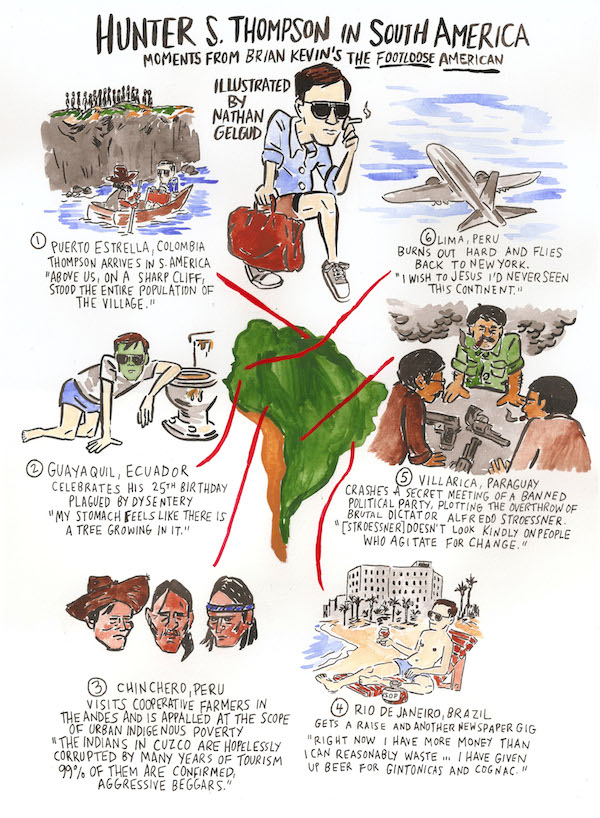Illustrated Gonzo: The Path of Hunter S. Thompson
By Nathan Gelgud

Illustration © Nathan Gelgud
Before he became the counterculture’s favorite first-person rebel reporter, a self-branded “gonzo” journalist, Hunter S. Thompson was a twenty-five-year-old correspondent for the National Observer. On a trip to South America, where he filed stories on authority run amok, the marginalization of the poor, and a general atmosphere of unease, Thompson developed the style with which he would make his name.
In his book The Footloose American, available May 20, writer Brian Kevin retraces Thompson’s trail around the continent, reporting on the current state of things with Thompson’s ghost as his guide. Kevin has helpfully provided Biographile with some highlights of Thompson’s trek, punctuating them with context and quotes from Thompson’s dispatches and letters. Here we find Thompson arriving in South America on a rowboat, discovering the appalling conditions of indigenous farmers, crashing meetings where government overthrow is being plotted, and sipping cognac on the beach in Rio de Janeiro.
Working on this loose map, jumping around with Thompson from his rowboat arrival to his burnt-out departure, I found myself thinking about what a formative experience this had to have been for him. There are the obvious geographical moves he’s making, sometimes doubling back to regions he’s already visited, at other times making big leaps across the continent. I especially like the way, in the deliberate sequence of events I’ve drawn up from Kevin’s notes, Thompson goes from empathizing with the plight of the downtrodden to hanging out on the beach with money to burn.
These extremes and contradictions are what made Thompson such an alluring figure, and – more importantly – such a dense and intriguing writer. Yes, he often saw the world through the haze of an altered state, but he also extracted and illuminated the violent mood swings of our politics and culture in a way that a sober mind may not have been able to process. In The Footloose American, reading about him watching governments overthrown overnight, engaging with the arbitrary nature of power, one witnesses a political writer forming a worldview. Of course, as someone who would later write about the Nixon administration, he needed all the prep he could get.
To purchase Nathan Gelgud’s original Biographile drawings and other work, go here.

